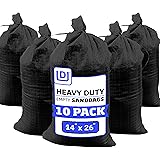Table of Contents:
- Budget-Friendly Emergency Supplies
- Creating a Disaster Plan Without Breaking the Bank
- Low-cost Ways to Safeguard Your Home
- Community Resources and Support Systems
Budget-Friendly Emergency Supplies
Alright folks, let’s start with the most obvious yet crucial part: supplies. Stocking up doesn’t mean spending your life savings. Here are my top tips:
Utilize Dollar Stores and Discounts: First things first, don’t overlook those dollar stores. You can find basic supplies like non-perishable food, first aid items, and even basic tools at a fraction of the cost. Every penny counts, and these stores often have hidden gems.
Buy in Bulk: When you do find a good deal, seize the opportunity. Bulk purchases, especially on sale, can go a long way. Think big bags of rice, beans, and other staples. This not only saves money but ensures you’re not running out anytime soon.
DIY Kits: Customizing your own emergency kit is not only cost-effective but ensures you have exactly what you need. Grab a sturdy backpack and fill it with necessities according to your specific environment and family needs.
Creating a Disaster Plan Without Breaking the Bank
Now, I know what you’re thinking. Plans sound expensive, but trust me, they don’t have to be. Here’s how you can set up a solid plan on the cheap:
Online Resources and Templates: Seriously, the internet is your best friend here. There are countless free templates and guides to help you map out a disaster plan. Print out a few favorites and customize them to fit your family’s needs.
Family and Community Drills: Conducting your own drills doesn’t cost a thing. Plan and practice various scenarios with your family or community. Familiarity with procedures can save lives and doesn’t cost a dime.
Communication Plan: Create a simple communication plan that includes contact numbers, meeting spots, and other vital information. Knowing where to go and who to contact can be literally lifesaving without costing a cent.
== > What if ... Get a FREE Subscription to PREPARE
Low-cost Ways to Safeguard Your Home
Your home should be your fortress, even against unexpected disasters, and you don’t need to spend a fortune to make it safe. Here are a few tips:
Basic Repairs: Small fixes around the house can actually make a significant difference. I’m talking about sealing windows, fixing leaks, and even simple gardening to prevent flooding. Every bit helps and these tasks are often inexpensive.
Thrift Shop Finds: Keep an eye out for deals at thrift shops, flea markets, and garage sales. You’d be amazed at the quality and utility of some items that can seal, protect, and insulate your home.
Safety Measures: Consider cheap but effective measures like smoke detectors, carbon monoxide alarms, and even sturdy locks. These might seem minor but can make a world of difference in an emergency.
Community Resources and Support Systems
Don’t underestimate the power of community. Often there are resources you can tap into without spending a dime. Here’s what I’ve found works:
Local Workshops and Classes: Many communities offer free or low-cost workshops on disaster preparedness. These can range from first aid classes to emergency planning sessions. Take advantage of these local gems.
Mutual Aid Networks: Connect with local groups. Communities often have mutual aid networks where members help each other with supplies and support during disasters. This can be lifesaving and cost-effective.
Community Centers and Shelters: Know where your local community centers and emergency shelters are. These are often free resources that can provide shelter, food, and other necessities during a disaster.
Frequently Asked Questions
- 1. How do I prioritize what to buy first?
- Start with non-perishable food, a basic first aid kit, and essential tools. These are the foundation of any good emergency kit.
- 2. Can I really prepare for disasters without spending much?
- Absolutely! Utilize dollar stores, bulk purchases, and even DIY kits to keep costs down while ensuring you’re well-prepared.
- 3. How often should I update my emergency supplies?
- A good rule of thumb is to check supplies twice a year. Rotate out expired items and restock essentials as needed.
- 4. What’s the best way to involve my community in preparedness?
- Organize local workshops, join mutual aid networks, and keep open lines of communication with your neighbors. Community involvement can amplify preparedness efforts.






